There wasn’t much time for planning. Â We made the reservations less than 48 hours out, with the basic plan that we would use the Dead Sea as a home base for the holiday weekend, making day trips from there to see the area. Â There was little planning on how to get there, if there were landmarks to see on the way there, and even how to leave the city by car.
Also, the car that Paul rented was on empty. Â This is how they do it in Jordan: you get an empty tank. Â But they were so nice… giving us the car the night before we needed it at no charge, and dropping it off to our home… who could complain? Â Finding a petrol station in a city of drivers can’t be too hard, right? Â Right…???
A tip: if driving in Jordan and you wish to have a road map, these are ONLY available at LIBRARIES. Â Not at petrol pumps, grocery stores, mega-box stores, or anywhere else. Â Libraries. Â And, in case you go looking for libraries, they will not be open during any moment outside of the workday, so forget trying to find one on your way home one afternoon. Not that you’ll actually be able to locate the building in a timely fashion. Â Another tip: if the whole library-map thing gets you down and you consider the rental of a GPS, take into account that the GPS you rent may not have been updated in this century. Â This means that all streets you are actually driving upon were not in existence when said GPS memorized the local roads. Â This will make the GPS highly problematic and worse, incredibly annoying. Â Finally, a last tip: simply go with the wife’s ‘we’ll-figure it out’ mentality and stop and ask lots of people for direction, or get very lost. Â Both add up to adventure, and that’s the point, right?
RIGHT.
So, we decide that Madaba is south and we are headed south (google had told us there was petrol south) and after thorough confusion about what, exactly indicates a “big bridge” — (the guy at the baked goods store at the side of the road said we should turn on a “big bridge” — note: “big bridge” may be a two-lane overpass) — we were committed: Madaba!
Madaba is a great choice for a traveler stop. Â For starters, there is a LOVELY visitors center. Â It is especially lovely because it avoids the word “tourist” in its description, and therefore, right off the bat is a hundred times more welcoming to me, the snobby traveler.
So without any horrid tourist labels, we arrived in the relative calm between tourist groups. Â Travelers at the Visitors Center in lovely Madaba. Â (Kudos to Paul in his driving in the narrow city streets, navigating children, livestock, round-a-bouts, and stores with wares spilling over the narrow sidewalks!)
Every field works hard to improve, and indeed, our international aid efforts are no different.  There is a lot of criticism of international aid, and while some of it shows there is room for improvement, I think it’s important to remember that that aid has done a great deal of good in the world.  Including protecting some of the most important archaeologic and historic sites in Jordan.  The sites in Madaba are evidence of that investment and when I saw this sign, I was really proud of that contribution from my country!
Visitor’s Center information in hand, we set off along the worn path of travelers to see Madaba’s sites.  The first was the Archaeologic Center.
(Is this the museum? Â Or a park? Â Or an announcement for the collection of tourists for gladiator battles? Â Arabic is tough stuff for us talentless Yanks, I-kind-you-what. One must be prepared to be okay with being a clueless moron in just about every situation!)
But we FOUND the site!  And happily went along in, reading the bilingual guides.  The kids are thrilled by any artifact they can photograph, so as long as we give them a camera to use, they are eager learners of late Roman and Byzantine history.
These are mosaics preserved from 6th century buildings in Madaba. Â This particular site had included a Roman road from the 2nd century, a sprawling estate, and then a church.
Having seen many Green and Roman mosaics, everywhere from museums in the US, UK, Italy, and Greece to those still on the walls in Roman and Greek buildings dating back hundreds of years… in my experience, these are some of the most impressive mosaics I’ve ever seen.
The clarity, the brightness and quality of the color, the SIZE — all very notable. In addition, the close proximity of the visitor to the pieces is unique.  Although a wonderful opportunity, perhaps this is not for the best.  One would hope that no douchebag violates that by defacing a priceless piece of history and artistry, but these people are unfortunately among us.
Like I said, you can really get close to admire the work. Â This piece is over 1500 years old.
The other pieces are around the main designs to show how the edging would have looked.
Other areas are still under study, but still accessible by visitors. Â This is the church and mansion — you walk around to see how under this huge mosaic were signs of the mansion that existed there before the church.
Incredible detail…
It’s hard to appreciate how impressive the mosaic is, as it’s so big, it’s hard to take in all the little symbols and stories held within the patterns.
I think Will took this picture. Â Nice, huh?
Give a kid a camera!
This entry way held an incredibly cool mosaic, showing seasons at the corners (the Goddess Cornucopia, with the trademark horn, with seasonal goods spilling out to show each season) and the story of Phaedra and Hippolytus in the center.
I totally tried to tell the kids the story, but reminded myself that I should be happy that they were interested without my getting all Greek-myth-crazy-geeky on them. Â Also, it’s a sad story. Â Do you remember it? Â Phaedra is married to Theseus (of the Minotaur fame) and because of some curse from Aphrodite, is made to fall in love with Theseus’s son, Hippolytus. (Not her own son, just her step-son.) Â It doesn’t end well. Â There are various endings, but Euripedes’ version has Theseus killing Hippolytus and then Phaedra committing suicide, which is sort of how all the others end, too, eventually. Â So it’s probably for the better that I didn’t force the kids to find the symbolism of the story in the mosaic.
From there, we ventured to the spot where most visitors to Madaba Bee-Line to upon entry into the town: St. George’s Church, or, the Church With THE MAP.
Here is a picture of the Church courtyard. Â It’s simply a lovely, lovely church in the center of the town.
By the way, 1/3 of the population of Madaba is Christian.  So this place is used regularly for services, as it has been for more than a millennia.
Here is the church. Â In the small but thoughtful and informative museum, there are photographs of this church in the middle of a barren hillside outside of the village proper dating back to the turn of the century. Â It’s as sweet and stately in those pictures as it is now… really a special place.
Here is the museum, where you go to pay your 1JD for entry. Â The guard has cousins in Florida and Detroit, just in case you get to chatting!
The inside feels much like going into an old European church.
There are prayer candles burning (I couldn’t find candles for visitors, however) and the walls are lined with more modern mosaics and pews.
And then, right up by the nave, is the oldest map of the Holy Land. Â The one that scholars have used for the last 150 years to pinpoint just WHERE in the places in the Scriptures actually exist. Â Where IS Mount Nebo? Â Where is Sodom? Â Where was Christ born? Â These are the kinds of questions brought to this map. Â It’s the oldest map we have that charts out the places discussed in scripture. Â It’s been painted, reproduced, and photographed a million different ways, so while we won’t ever lose what information it there, it’s still a pretty cool mosaic in a pretty cool church.
A very cute, very sweet church.
We really hope that the carpets are to protect the mosaic, and not to bring out the pews to set on top of it during services. Â (Right, right?)
The rest of the church is lovely, too. Â Madaba is worth a visit!
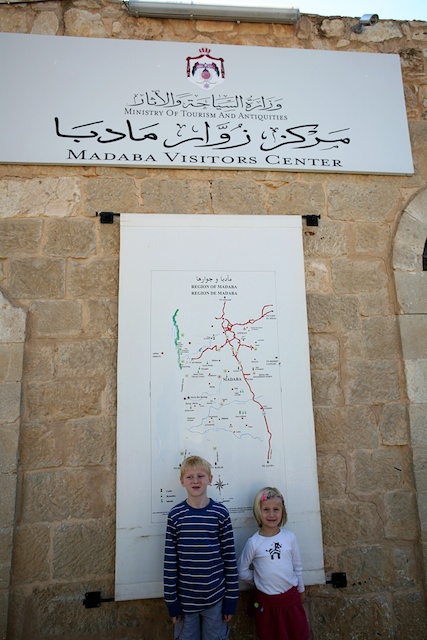
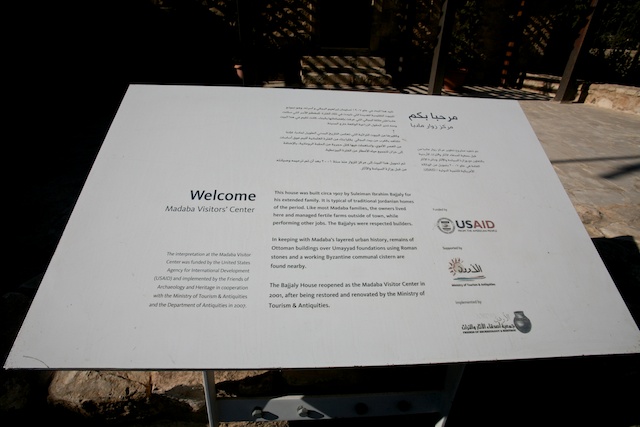
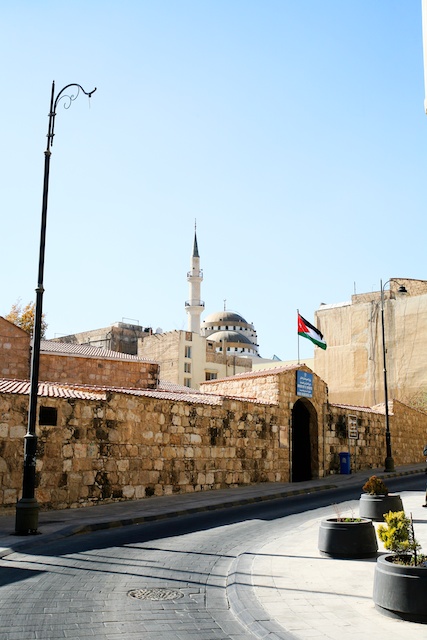
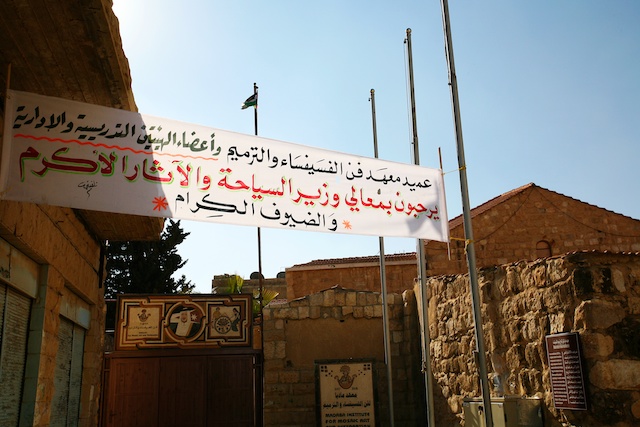
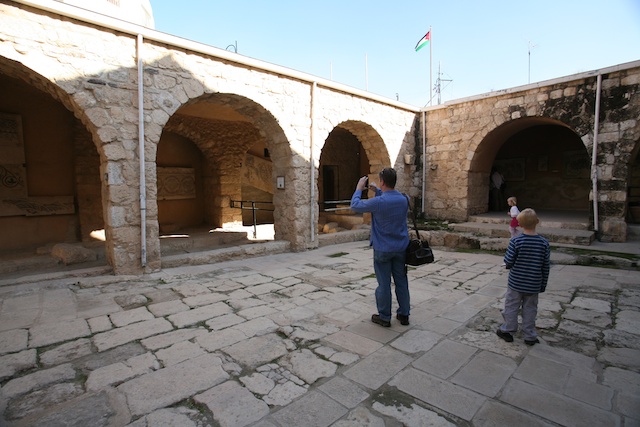
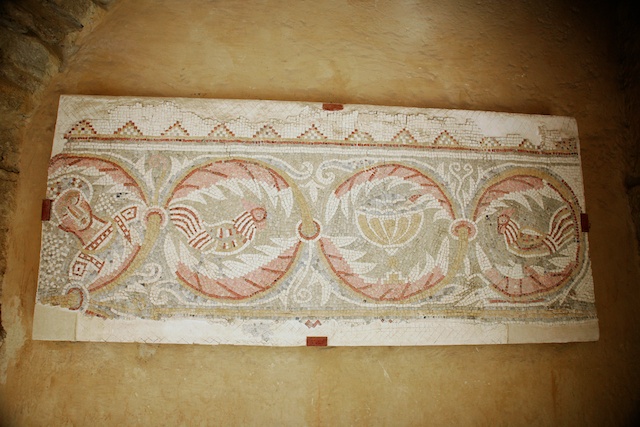
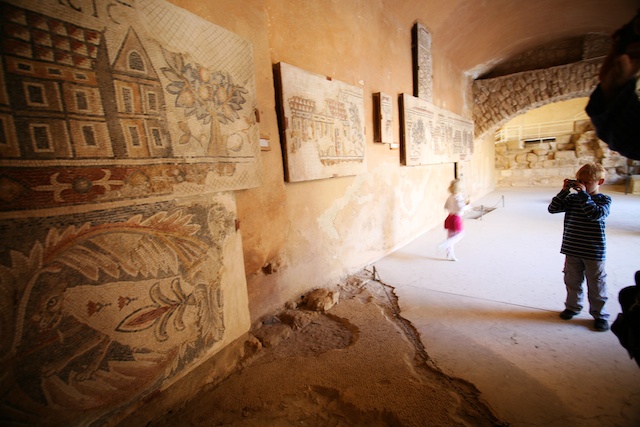
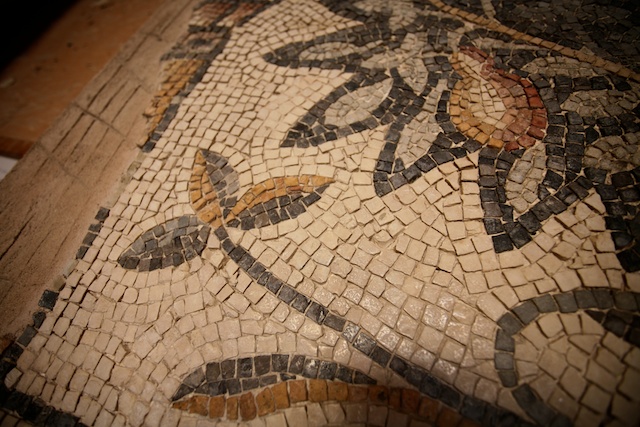
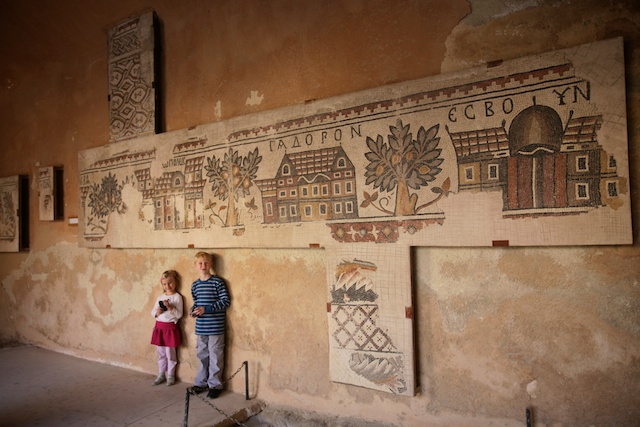
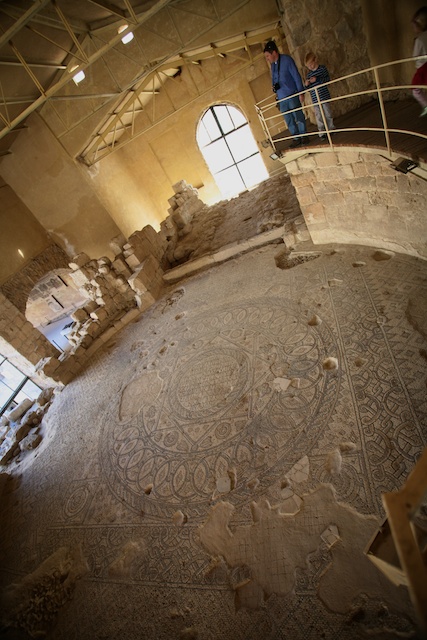
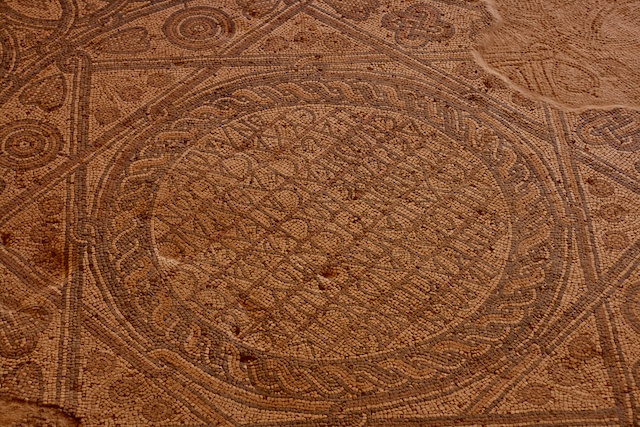
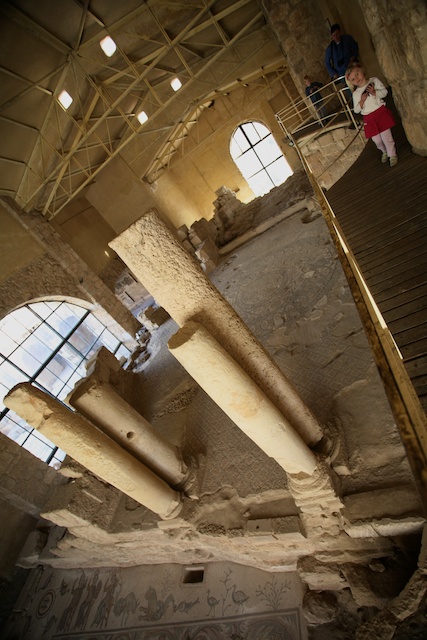
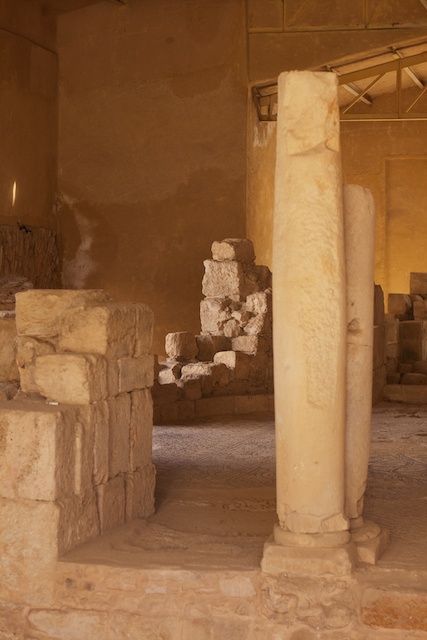
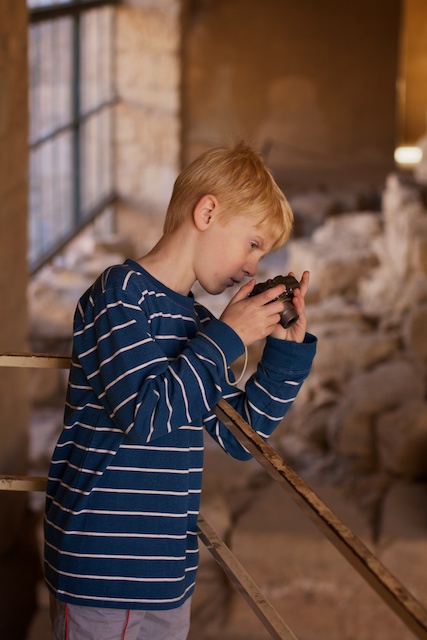
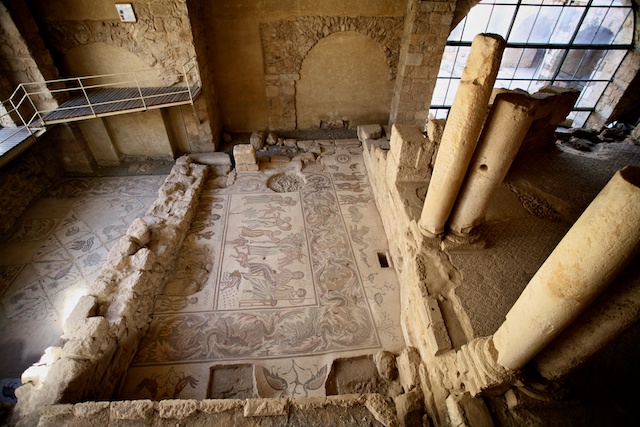
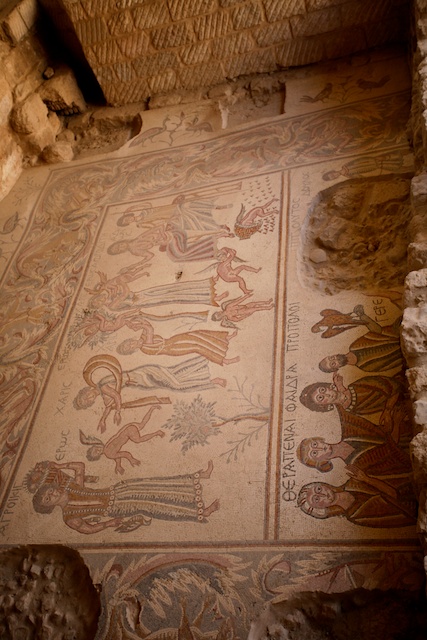
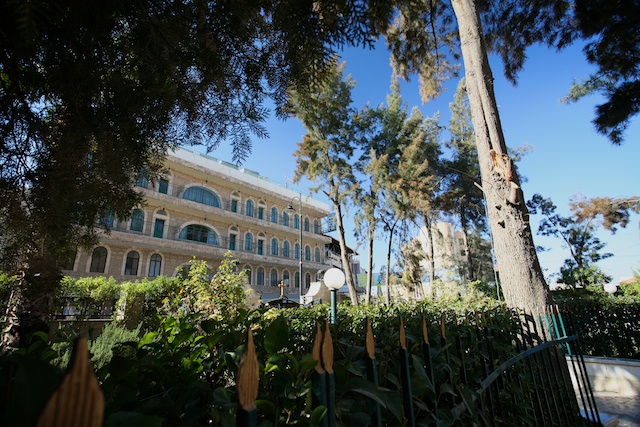
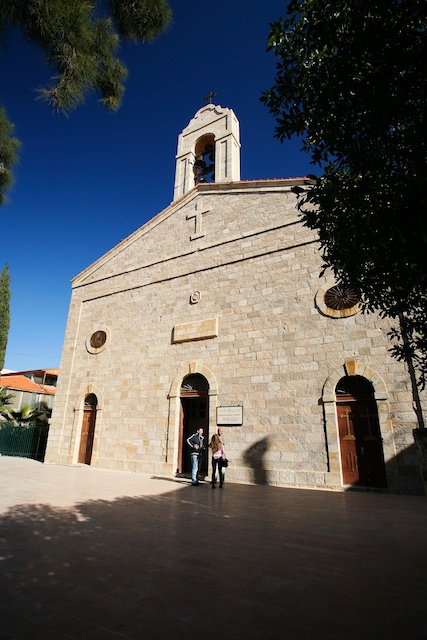
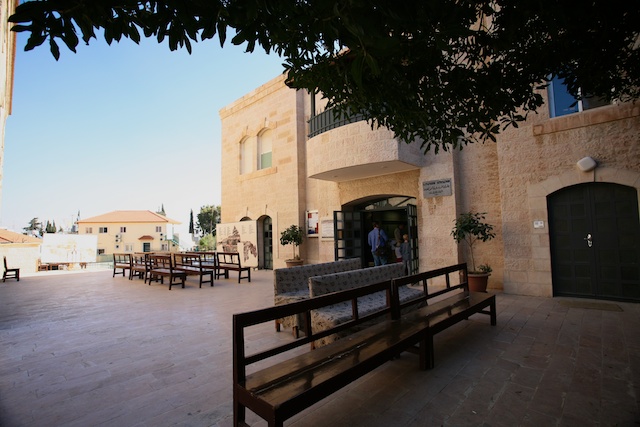
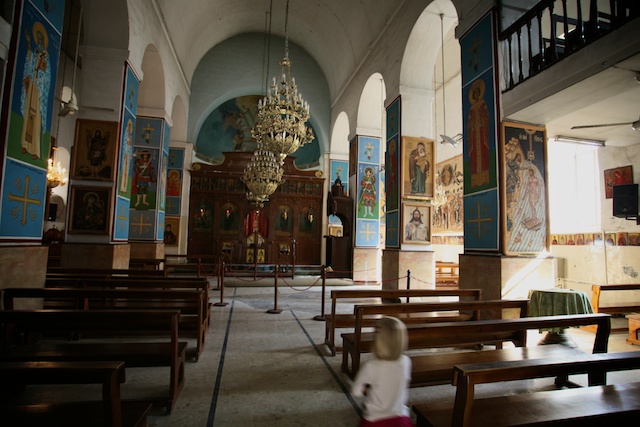
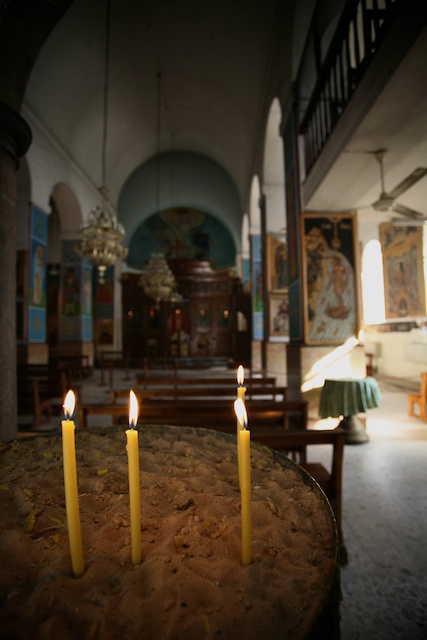
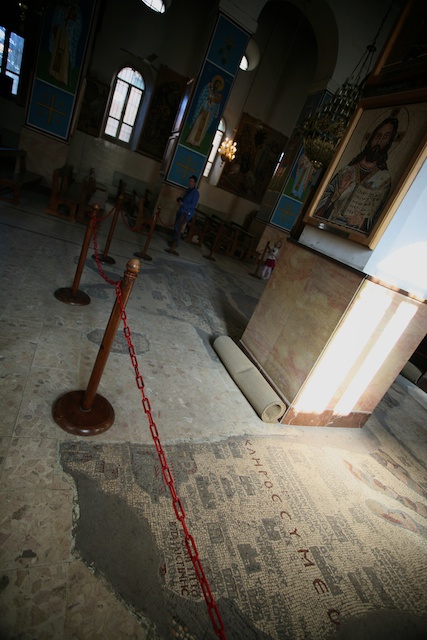
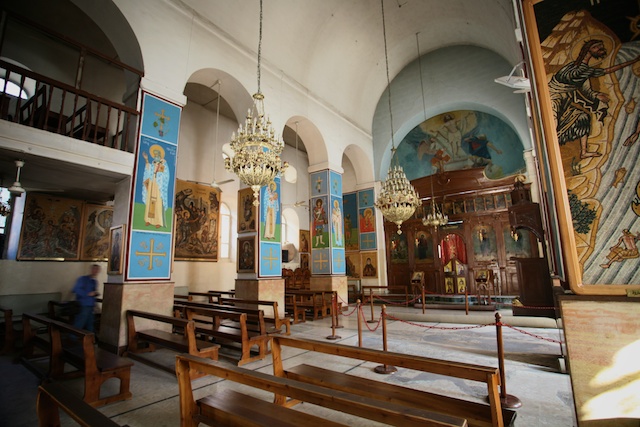
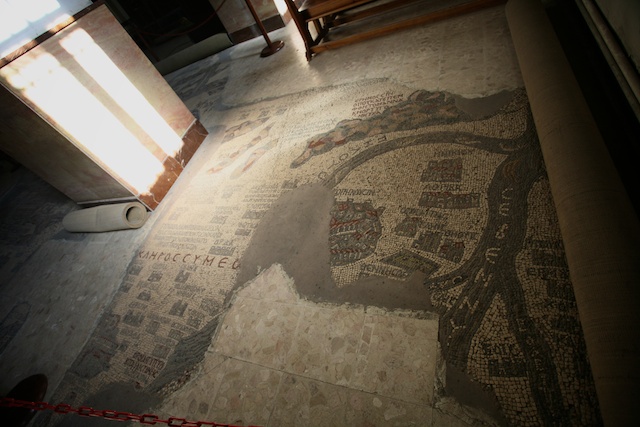
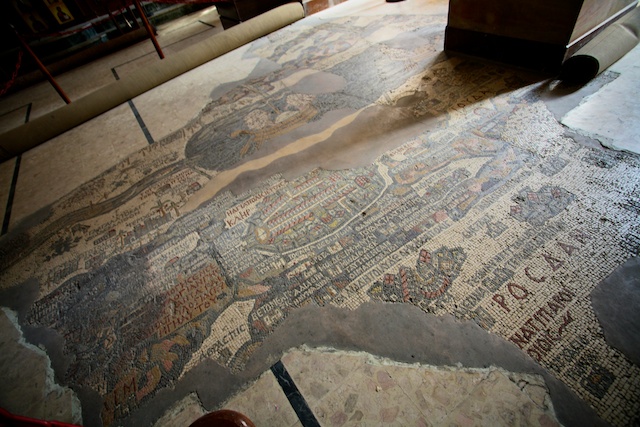
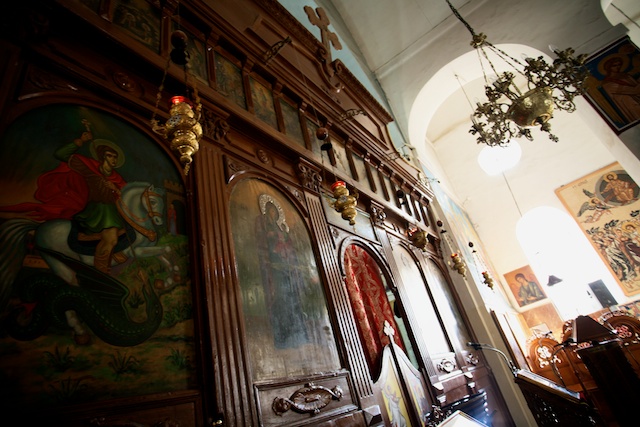
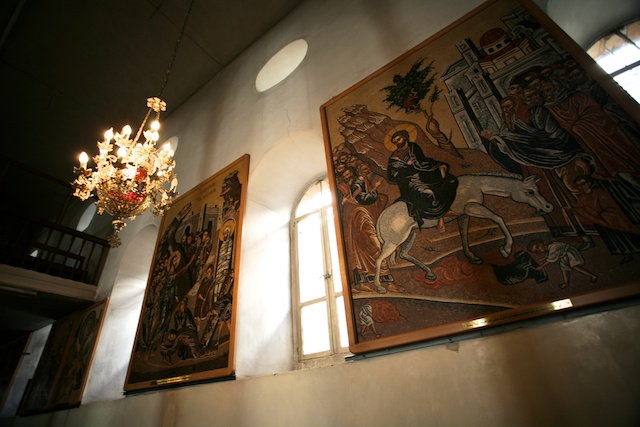









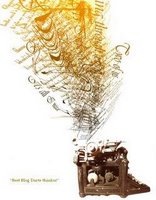





De A | 27-Dec-11 at 11:51 am | Permalink
This is astonishing. How come you are the only visitors?